|
Getting your Trinity Audio player ready...
|
Elemental, Pixar’s eagerly anticipated summer feature, brings together bold new landscapes, cutting-edge production design, visual effects and technological advances while embracing classic romantic comedy/opposites attract storyline. And there’s even more to discover under the surface.
When we see Ember, a young member of the fire community, and Wade, who is part of the water community, fall for each other in Element City, we’re watching part of director Peter Sohn’s life as he grew up in the Bronx as the child of Korean immigrants. Sohn says he felt different and set apart from other groups in the city, and he eventually fell in love and married someone outside of his Korean community. This was a very big deal.
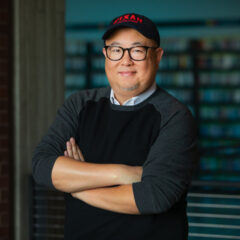
“My grandmother’s dying words were literally ‘marry Korean.’ My mother had a hard time at first with my wife not being Korean, too, because she wanted to relate to her on a cultural level and they were from different cultures,” recalls Sohn.
“My North Star when I was developing this movie was telling the story of these two characters who fall in love even though they’re different and opposites and they must deal with the reactions of their families and their communities. Yet, the love they have for each other is very strong.”
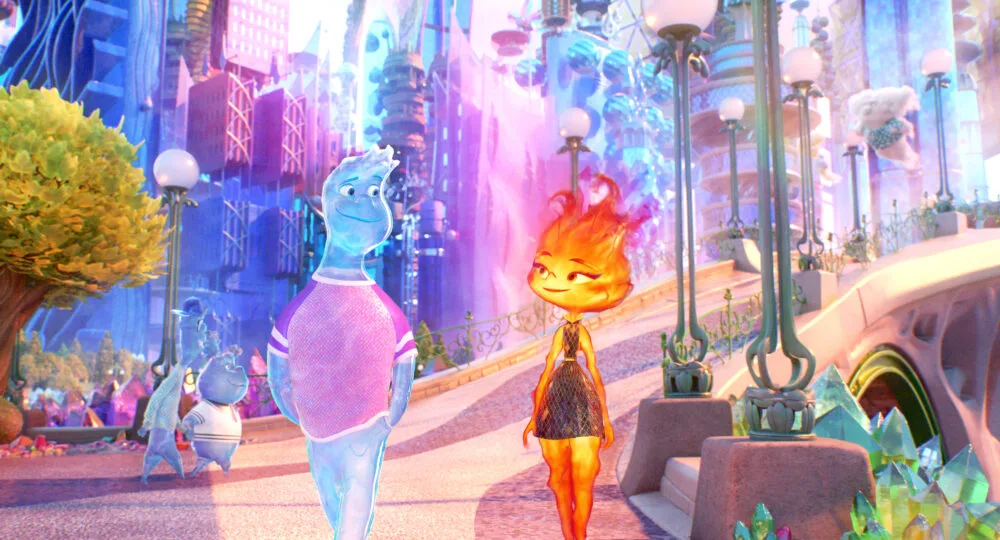
Personal Connections
For Sohn, who has worked on many Pixar movies (including Finding Nemo, The Incredibles movies and Brave) and directed The Good Dinosaur and the short Partly Cloudy, the film took on deep meaning as the film took seven years to finish. Sadly, both of his parents passed away while he was making it, but that only made him more determined to share his family’s story.
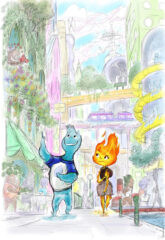
As the director played with ideas of how the characters should look and behave, he realized that he would be asking for things that had never been done. While that sort of thing happens at Pixar all the time, the complicated nature of fire and water brought up challenges almost immediately.
“It was hard to even get images of Ember and Wade that looked good for posters or stills because both of them — fire and water — look best when they’re moving,” says Sohn. “We were also faced with trying to capture emotion while at the same time being true to these elements. You’re trying to make water move like water and if you have it moving too slowly or too quickly then it becomes like gravy or Jell-O. Color is also difficult because if you start to make it more to blue, and then it turns into an alien or a ghost-like thing. If it’s not transparent enough, then he doesn’t look like he’s water at all. You have to decide how this character made of water will reflect a sunset or the lights inside a house.”
He adds, “With Ember, we had to find a way for her to be fire, but to move and for her shape to constantly be adjusting to the things around her that might make her burn brighter or smaller.”
As directors of animation Gwendelyn Enderoglu and Allison Rutland set about devising ways to make these characters come to life, they realized they would have to come up with entirely new approaches to their process.
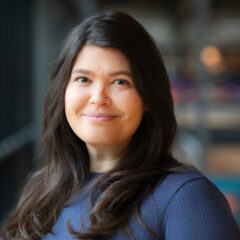
“We knew our typical rig wasn’t going solve the problem of how these characters move,” says Enderoglu. “So, we had to build on top of what we had. What we added for this film really was about creating ways for animators to make shape change within our rigs. We had to learn by doing. We were two sequences in when we finally started to really see work on the big screen. That was where it hit us that there might be too much going on with movement, and it was a critical turning point for our team and for Pete. Around that time, we made changes to both characters’ hair rigs, which I think was unique to this film. We had to go through those first few sequences to even learn what we were trying to create.”
Visual effects also became central to the story as Sohn looked for ways to show the elements reacting to one another and the difficulties they must overcome if they want to be together. From the start, VFX supervisor Sanjay Bakshi knew it wouldn’t be like anything he’d done in the past.
“Challenges were apparent from the very first storyboards of this film and there was nothing hidden,” says Bakshi. “This was a big swing. It was like being one of the technical folks who first saw the Toy Story reel and had to build a team and figure it out. It’s exciting to be working with a bunch of people who all have this common goal and are all terrified together. Sometimes great work comes out of that. We had to build a technology for Ember and all the fire characters so that when animation finished their shot, they could check it in, and the fire simulation would happen automatically and track the performance of the character. That was a big investment in technology that we did just for this film.”
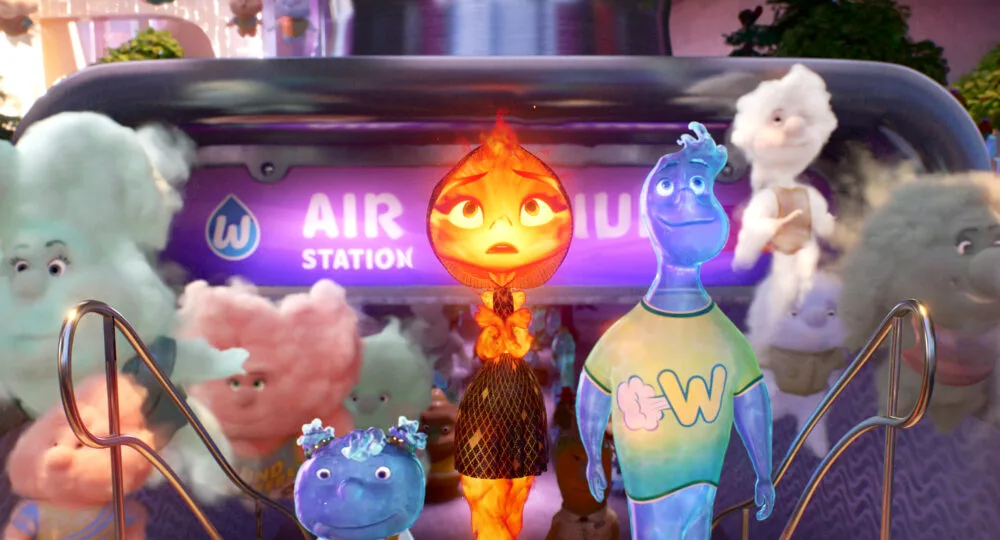
Since the film production spanned over seven years, Sohn and his crew had to work remotely during several parts of making Elemental. While they developed ways of getting things done and even socializing over Zoom, the director was not a fan of making the movie that way. As an animator and artist, Sohn loves collaborating with a group and believes many of the best ideas are found while they’re simply working together, looking over each other’s shoulders as the create and develop each part of a film.
Along with the talented crew, the film attracted a stellar voice cast that includes Catherine O’Hara as Brook Ripple (Wade’s mother), Leah Lewis (Ember Lumen) of The Half of It, Mamoudou Athie (Wade) who appeared in Jurassic World: Dominion, and Wendi McLendon-Covey (Cinder) whose credits include Bridesmaids and What Men Want.
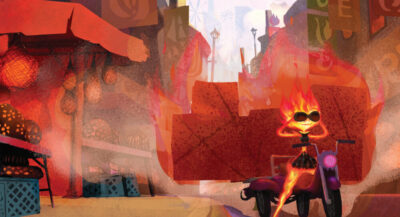
Pushing the Limits
As Sohn looks back on the new advances that had to be made to create the visuals for Elemental, he’s hungry to go back and see what else could be accomplished. Now that Wade looks like the water character he was meant to be with his flowing rock-star hair, the director wonders how much further they could have pushed things if there were just a little more time.
“There’s fear all the time when you start to imagine something that hasn’t been done and you try to do it,” says Sohn. “Honestly, walking away from it, I get greedy about what could have been done. I think we could do so much more. We have more time and now with that textbook technology we developed, we know what we know now and that opens more possibilities. For the next project, we can push it even further and see where we could go. So, I got a little greedy, even in the making of the movie. There were water elements that we discovered how to make better near the end and that made me want to try other things, to go back and imagine other moments we could create. I ask myself if we should have pushed even further in some ways because that’s part of the fun of what we do. And it will inspire me in the next project I do.”
Disney/Pixar’s Elemental will open in U.S. theaters on June 16.
Color Coding Four Different Districts

When production designer Don Shank began work on Elemental, he was handed a formidable challenge by director Pete Sohn: Bring together the differing elements of fire, water, earth and air into one unified city made up of unique districts. Shank was immediately inspired by the colors associated with those elements and many of the world’s great cities.
“The director did not want a dark movie,” says Shank. “He wanted a bright movie, one that was happy. So, the challenge was that a character like fire looks best on a dark environment. We had to bring that vibrancy and that joyful look and make it all work. Pete (Sohn) loves saturation and was always wanting to kind of keep pushing on it. Another challenge was all the different cultures that we’re trying to support. And each culture or element has its own color so then we’ve got all these other colors to work with.”
Shank points out that since they were working with four different elements, the instinct was to use color coding for each one. “Typically, for a production designer, a color is also a great tool for emotion, and it was another challenge for us to find a way to color code for these elements and use color for emotion,” he explains. “We wanted to have our cake and eat it too. It was extremely difficult, but I feel like we met that challenge.”
For example, the ‘Firetown’ district where the character Ember and her family live is generally shaded in warm reds and related tones. Since the Element City was founded by watery characters, there’s a canal system inspired by Venice, Italy. “We didn’t really want a melting pot,” says Shank. “You want to experience each culture, each area of the city and the beings who live there, so we focused on giving each part of Element City its own look.”
All images © 2023 Disney/Pixar. All Rights Reserved.



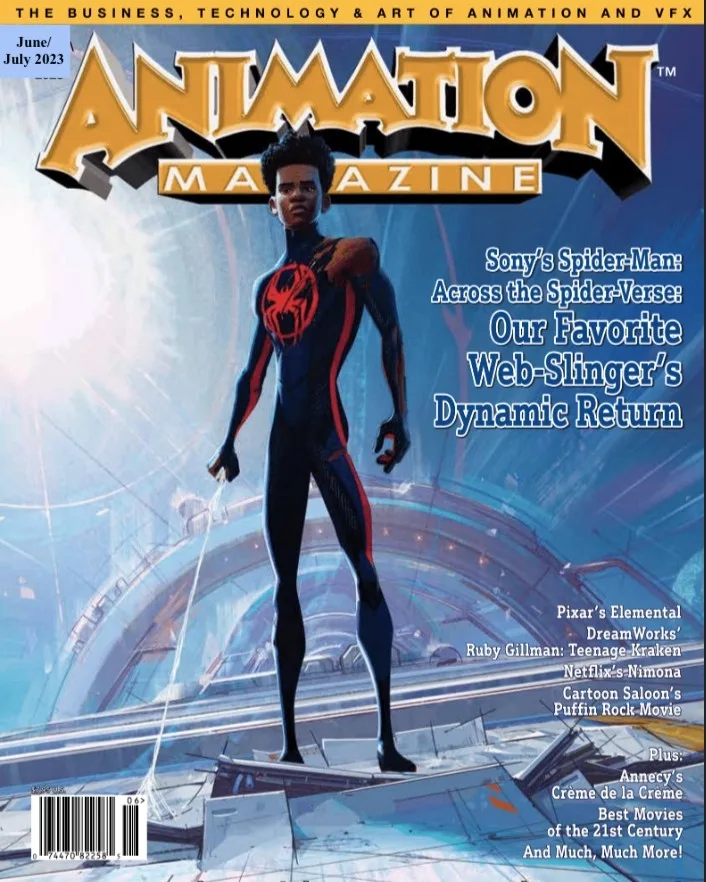
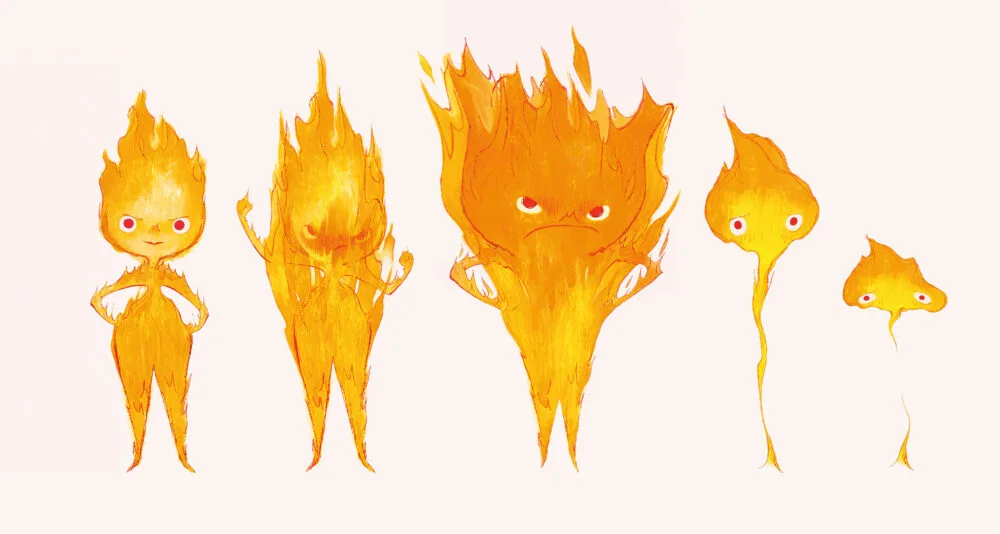
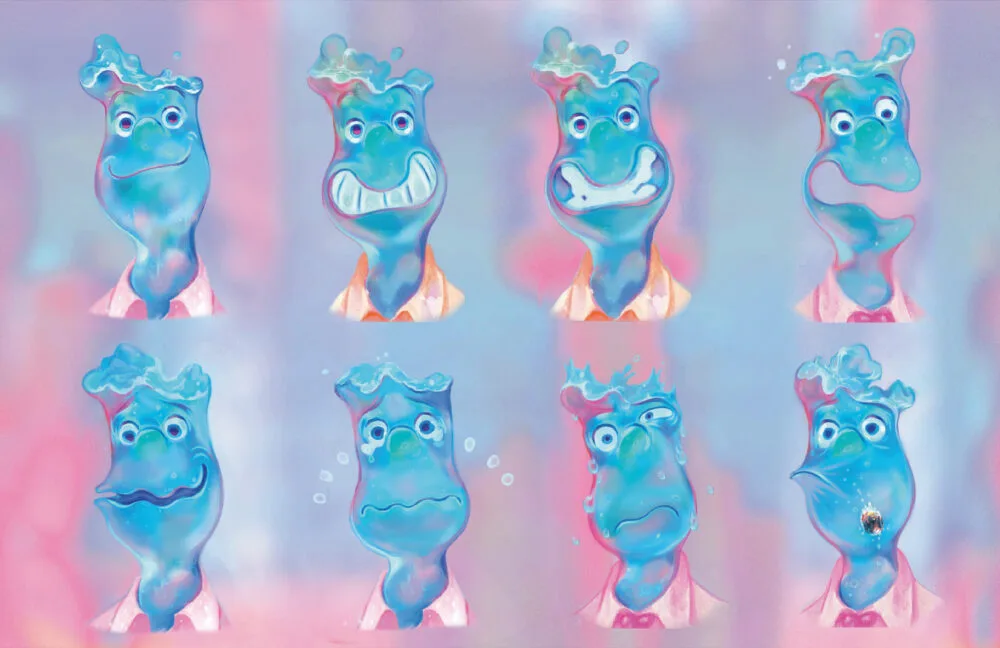
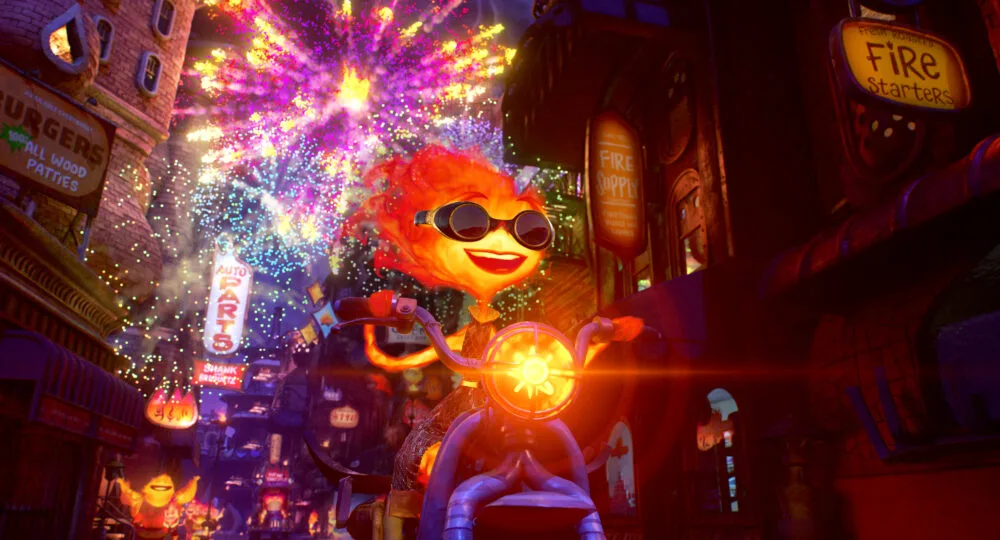
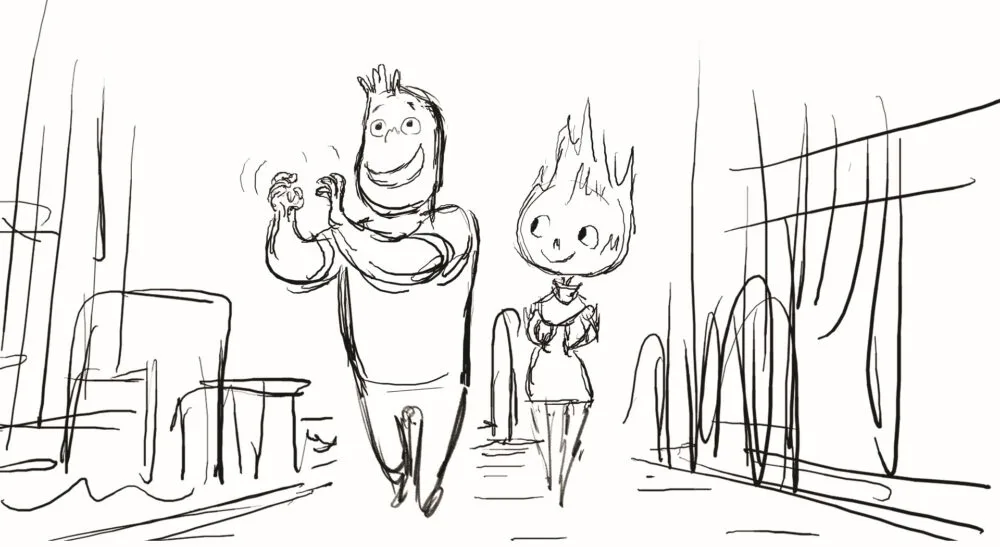
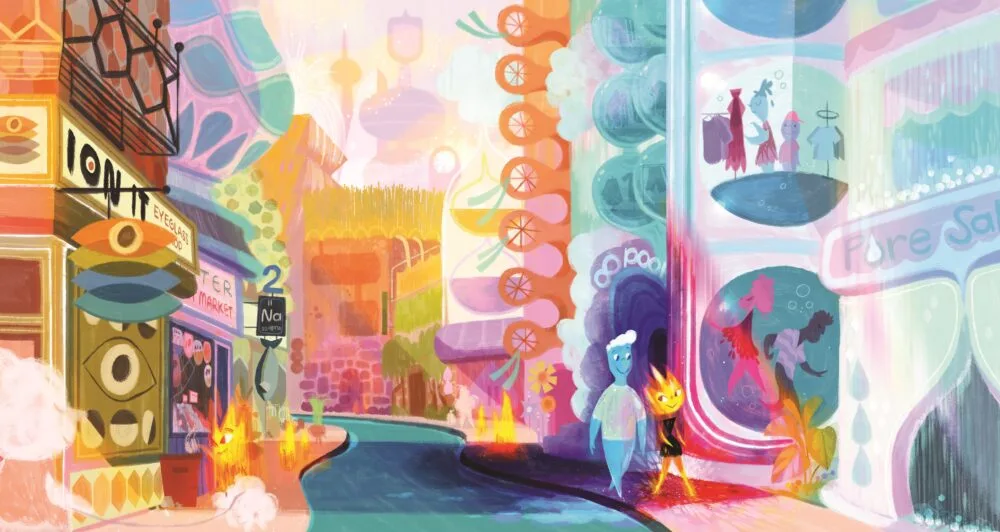
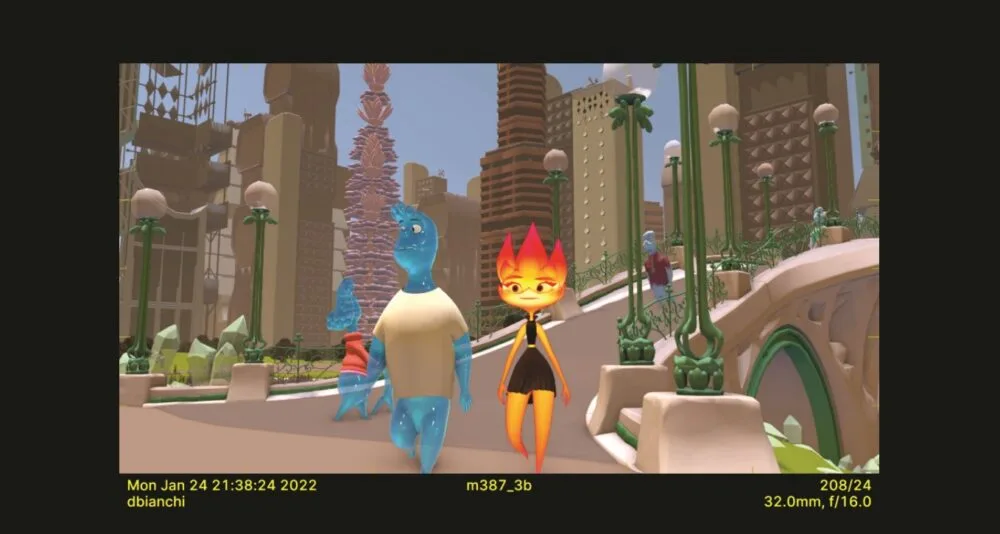
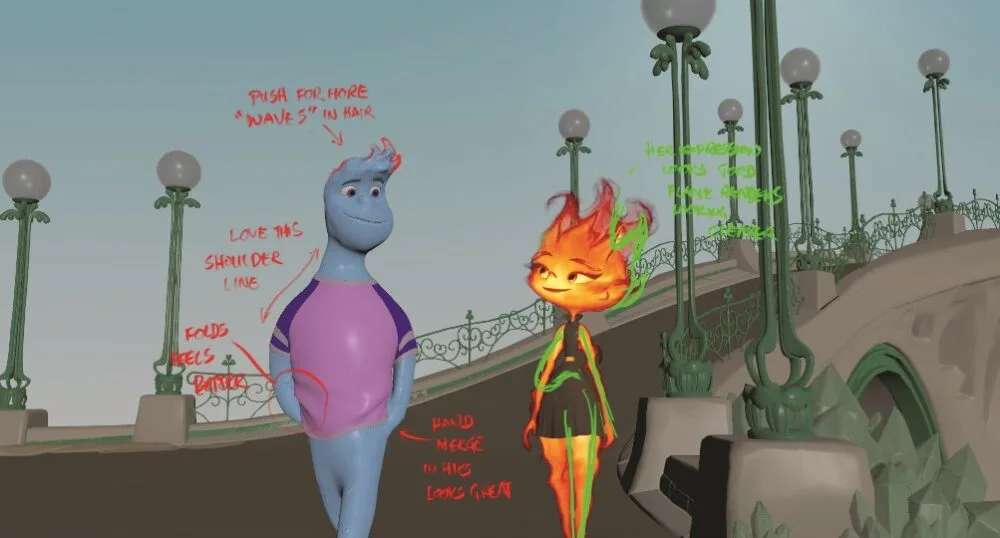
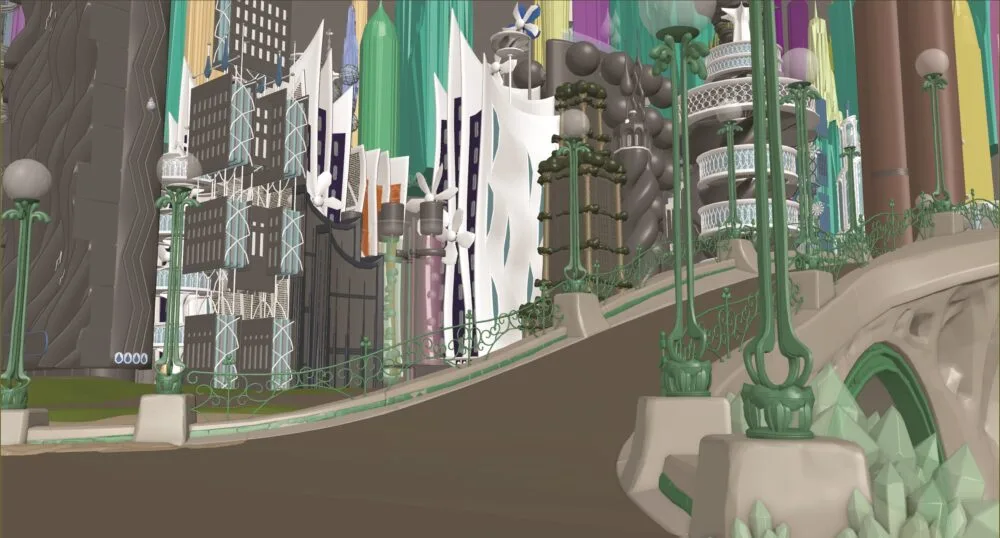
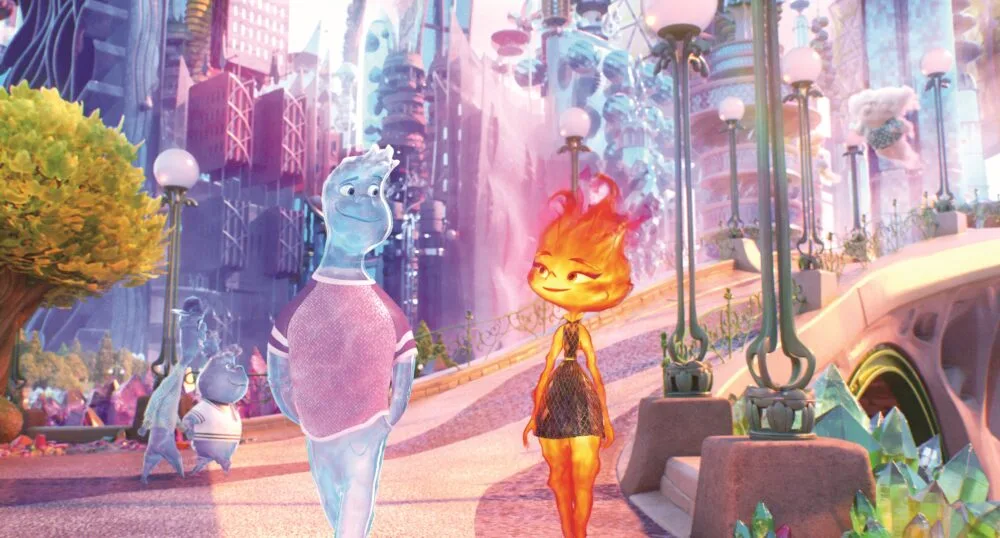

 Win a Funko X Lilo & Stitch Prize Pack!
Win a Funko X Lilo & Stitch Prize Pack! 
